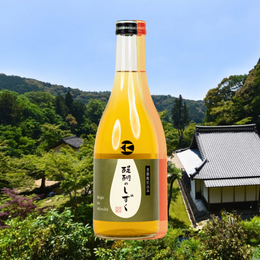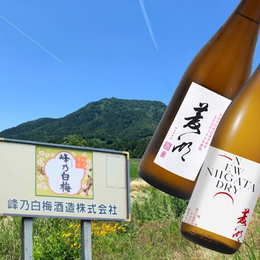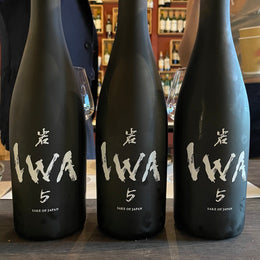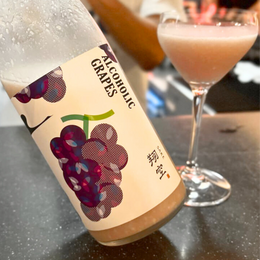Sakes from the Snow: Akitameijo Brewery - Ranman Junmai Daiginjo Tamakine Hyakuden, Kaori Ranman Junmai Ginjo, Bishu Ranman Tokubetsu Junmai Review

We were invited to the Asian Sake Festival Industry tasting, where sake distributors, restaurant owners and sake enthusiasts alike gather to sample sakes from all across Japan. There were 99 sakes to be tasted!

Image Courtesy of Asian Sake Festival.
Upon entering the venue, I headed straight to the first booth: where Akitameijo were showcasing their sakes. Truth be told, I haven’t had much sakes at this point, including sakes from Akita Prefecture. Let's start the sake tasting!


Akita, Snow Country
As the name implies, Akitameijo 秋田銘醸 hails from Akita Prefecture. Akita is known for a few things, hot spring towns, Akita Inus (the dog breed which has a statue outside the Tokyo Shibuya Station), and most relevant to our topic of discussion today: large snowfalls in winter and consistently cool weather.

Snow Giants are a natural phenomenon of Akita. Source: Tokyo Weekender
Akita Prefecture is also famous for its rice production - being able to produce 192% of its prefecture’s demand for rice. The plentiful rice production is owed to the many rivers that run across the prefecture, contributing mineral rich water to the soil; alongside snow melts that protect the soil and mountains that block cold winds that damage crops. A famous rice cultivar “Akita Komachi あきたこまち” is widely loved across Japan.

Source: Ranman.co.jp
And where there is good water and good rice, there is good sake - in fact, Akita, while being known as “Rice Country 米の国”, it was also known to be “Sake Country 酒の国”, with over 500 years of sake brewing history. In an official letter submitted to the shogunate in 1618 by the Satake clan, there were 746 sake breweries within the domain. Some sources attributed the sake boom to the influx of workers at the silver mines in the prefecture, where harsh cold winters necessitated the need for sake. Naturally, much of rice production from Akita went to brewing sakes as well - making Akita’s sake production self-sufficient on a prefecture level.

A sake brewery buried in the snow, sometime in early Showa era. Source: Source: Ranman.co.jp
Akitameijo Brewery - 101 years
Akitameijo Co. Ltd 秋田銘醸株式会社 was founded in 1922, having just celebrated their 100th anniversary last year. The brewing operations were established in Yuzawa City, at the southernmost tip of the Akita prefecture, where water from the nearby Omono River was used.

Omono River. Source: Wikipedia
The sake’s brand name, Bishu Ranman 美酒爛漫 (bishu 美酒 translates to “beautiful sake” and ranman 爛漫 translates to exorbitant/luxurious), was selected from a public naming competition. 88 sake brewers, politicians and government officials gathered and started the company, which was an unusual endeavour at the time.

A bird's eye view of the brewery at the time of founding. Source: Ranman.co.jp
From the get go, Akitameijo embraced technology - which was again, unusual at the time. The outfit was equipped with then modern technology, increasing sake productivity. For its size, it managed to produce 10,000 koku (roughly 180 litres) of sake.

Facilities at the Mitake brewery. Source: Tohoku Kanko
After some time, the company had to expand its brewing operations, hence, opening another more modern, automated brewery. Currently, there are two sake breweries operating under Akitameijo: the Ogachi brewery 雄勝蔵 that produces premium sakes such as daiginjo sake with traditional methods, and the Mitake brewery 御嶽蔵 that utilises more modern and automated processes. Now, the breweries produce 100,000 koku of sake, tenfold from its beginnings.
![]()
The words Ranman 爛漫 on the sake cask. Source: Ranman.co.jp
Rice rice baby
The rice industry in Akita has been suffering as of late - as farmers are ageing and there are not enough successors to take over rice production. Sake rice production has been on the decline as well. In 2022, Akitameijo wanted to “revive the land of sake rice”, by trying its hand at rice cultivation as well.
Hence, Akitameijo now owns a few rice fields near the brewery - where staff sprout rice in their greenhouses, sow the seedlings, manage water and fertiliser, harvest the rice, and eventually de-bran and polish the rice in their brewery.

Source: Ranman.co.jp
Essentially, that means that the sake brewery had a hand in every step of the sake making process, all the way down to obtaining their ingredients. The concept was modelled after the winemakers in Europe, where the winery oversees grape growing, harvesting and wine production. Akitameijo states that this is a new shift to focus on terroir in their sakes, a bold step for their next 100 years in sake brewing.

On the topic of terroir, Akitameijo also prides itself in its low temperature and slow fermentation times. Given the naturally cold temperature during the autumn and winter (when sake is brewed), the yeast and koji is allowed to ferment the sake for a longer period of time.

Source: Ranman.co.jp
Ranman Junmai Daiginjo Tamakine Hyakuden 爛漫 純米大吟醸 環稲 百田, 15% ABV – Review

From the Akitameijo website, there are currently two flagship sake series under the Ranman brand. The first series is called the “Ine Series 稲シリーズ”, with a great emphasis on the rice used for the sakes. Under this series, the sakes are further split into two lines: the Tamakine 環稲 for the junmai daiginjo sakes and Mone 萌稲 for the junmai sakes.
Akitameijo has, for one, always used rice that were natively produced within Akita prefecture. There are two sakes under the Tamakine line that uses two different types of sake rice: Hyakuden 百田 (and the one we are reviewing today) and Ichihozumi 一穂積.

Source: Ranman.co.jp
Here’s an infographic that illustrates the lineage of Hyakuden: Hyakuden is a crossbreed between Misato Nishiki 美郷錦 and Akikeishu No. 718 秋系酒718号, which, respectively are Yamada Nishiki 山田錦 x Fukushimashu No. 2 福島2号 (Yume No Kaori 夢の香) and Yamada Nishiki 山田錦 x Miyama Nishiki 美山錦. Hyakuden rice has been known to provide a rich and deep rice taste, with Akitameijo describing it as “full and plump ふくらみ”.

Source: Ranman.co.jp
Here are some specs of the sake:
| Alcohol | 15% |
| Rice | Hyakudan |
| Polishing rate | 40% |
| SMV | +2.0 |
| Acidity | 1.3 |
Nose: Quite delicate on the nose. I get a light peach aroma that is accompanied with banana, as well as peach juice with very subtle tropical fruit notes (like a mix of mango and pineapple).
Taste: Not as fruity as the nose would suggest. There is quite a drying sensation, with a potent rice cracker and steamed rice aroma.

Finish: The drying sensation lingers for a bit, but gives way to a musty, somewhat savoury aroma. I think of cured sausages (saucisson) oddly enough.
Kaori Ranman Junmai Ginjo かおり 爛漫 純米吟醸, 15% ABV – Review

Now, this is the second Ranman flagship series, the Kaori series かおりシリーズ. As the name implies, this series focuses on the aromas of the sake. The spotlight for this series lies in the yeast, though, the species of rice is nevertheless an important factor as well.

Source: Ranman.co.jp
Here, the junmai sakes and the junmai ginjo/daiginjo sakes uses different rice as yeast. The junmai ginjo sake uses the Akitasake Komachi 秋田酒 こまち, which is a cross of Akikeishu No. 251 秋系酒251号 and Akikeishu No. 306 秋系酒306号, which respectively, are crossed between Gohyakumanshi 五百万石 (I’m not sure if this is the correct way to read it) x Yoneshiro ヨネシロ and Akikeishu No. 40 秋系酒40号 x Hanafubuki 華吹雪.

Source: Ranman.co.jp
Additionally, the yeast, Komachi Yeast Special こまち酵母スペシャル , gives the sake a fruity and “gorgeous” aroma.
| Alcohol | 15% |
| Rice | Akitasake Komachi |
| Polishing rate | 60% |
| SMV | +3.0 |
| Acidity | 1.4 |
| Yeast | Komachi Yeast Special |
Nose: Quite sweet and aromatic on the nose. For me, it smells like rose water, turkish delight and jasmine flowers. There is a hint of ripe peach that is mixed in together with the floral bouquet.
Taste: Initially, it has a bit of a savoury, confectionery sweet profile, that reminded me of plain mochi that was coated with a dusting of rice flour. As the palate develops, the peach aromas reveal itself a bit more.

Finish: With how delicate the palate was, I was left with the aroma of freshly steamed rice at the finish. The peach aroma does not linger long, nor does any sweetness.
Bishu Ranman Tokubetsu Junmai 爛漫 美酒 特別純米酒, 15% ABV – Review

Sometimes, sake production gets a bit of an unfair reputation, that it is steeped in the old and the archaic, valuing tradition over modernity. In fact, there is a lot of science and innovation that goes behind the scenes, and Akita prefecture is well known to be on the frontiers where the horizons of sake brewing is broadened.

The AKITA Yukikuni Yeast project. Source: furusato-pr.jp
Not only is Akita prefecture one of the first few prefectures to have their own sake rice and yeast research centres, sake breweries often work closely with these laboratories to produce better sake - be it more climate resilient rice or different strains of yeast with desirable properties.
For this sake, the rice and yeast used are relatively new players in the scene. The rice, Ginsan ぎんさん, was bred in 2013 in Akita prefecture, a cross between Akita No. 63 秋田63号 and Iwate No. 75 岩手75号.

Akita No. 107, also known as Ginsan. Souce: Akita Prefectural Agricultural Experiment Station
Despite being a large producer of sake, Akita’s booze rarely gets exported overseas. As it turns out, long transports, irregularities in temperature and exposure to light decreases the quality of sake, where off flavours are often produced. Hence, researchers were tasked to produce a yeast that could mitigate such effects.
Yukikuni 雪国酵母 (with 雪国 translating to “snow country, referring to Akita”) was developed within this decade, with this aim.

How Akita Yukuni Yeast fares diffrently compared to other yeast in producing off flavours in stored sake. Souce: Akita Yukikuni Yeast
There are two yeast variants of the Akita Yukikuni Yeast. The UT-1, which produces about the same amount of ethyl caproate (often described as having an apple scent, also known as ethyl hexanoate) as its parent strain Komachi Yeast Special, produces less off-flavour caproic acid (also known as hexanoic acid, which is associated to a fatty, cheesy, goaty aroma). The development of this particular yeast received an award from the Minister of Education, Culture, Sports, Science and Technology at the 2020 Tohoku Regional Invention Awards.

Ms. Uehara, a researching involved in the yeast project. Souce: furusato-pr.jp
The UT-2 variant has similar achievements. The yeast produces the same amount of isoamyl acetate (the aroma associated with bananas, also known as isopentyl acetate) as its parent strain Akita No. 12 秋田No.12, but does not produce as much isoamyl alcohol (also named as isopentyl alcohol).
As of now, there are 14 breweries in Akita that uses the Akita Yukikuni yeast, with Akitameijo being one of them.
| Alcohol | 15% |
| Rice | Ginsan |
| Polishing rate | 50% |
| SMV | +3.0 |
| Acidity | 1.6 |
| Yeast | AKITA Yukiguni yeast |
Nose: A strong, dusty aroma of unwashed rice. The rice aroma is quite pronounced here, more of toasted rice grains and fried rice in character.
Taste: The flavours are more umami, with a bit of an oceanic savouriness. I think of deepfried ikan bilis (whitebait), with some of that savouriness without an overtly fishy taste.

Finish: The finish is relatively short, given how intense the flavours were. The finish leans towards a more steamed rice sensation.
Overall thoughts on Akitameijo: ⛄
I think there is a sake for everyone with Akitameijo. There is a delicate sense around the sakes, that remind me of a fluffy snowball. For those looking for pleasing, sweet and floral sakes, the Kaori series is a great recommendation, and for those looking for a drier, more intense sake, the Bishu Yukikuni is a good option. I’m looking forward to tasting more Akita sakes in the future.

@vernoncelli







